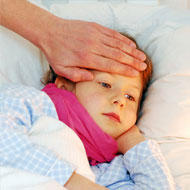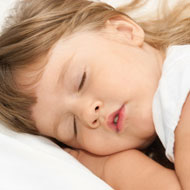Toddler Sleep Apnea: Symptoms, Causes, Treatment and Precautions
Sleep apnea is a common sleep disorder. It is a condition in which an individual’s airways get blocked at regular intervals during sleep. This in turn causes interruption and difficulty in breathing.
Sleep apnea affects adults and toddlers alike, and while it is a manageable disorder, it can prove to be a potentially problematic condition for toddlers. Toddler sleep apnea leads to an interruption in oxygen supply, and as a result, a drop in oxygen levels in the toddlers. If the interruption in breathing is too long, it can prove very dangerous.
While there are several types of sleep apnea, it is obstructive sleep apnea that is the most common cause of sleep apnea in toddlers.
Symptoms of Sleep Apnea
The most telling signs of sleep apnea are snoring, restless sleep, difficulty breathing while asleep (the toddler often breathes through the mouth), constant coughing and choking during the night, fatigue the next morning, etc.
Causes of Sleep Apnea
The main cause of sleep apnea in toddlers is obstructed sleep apnea. It results in the toddler’s airways to be obstructed by enlarged tonsils. In such a condition, enough oxygen doesn’t reach the toddler’s lungs. This causes heavy breathing. The result is restless sleep, interrupted sleep and fatigue.
Sleep apnea can also be a result of blockage caused by allergies, excessive weight, having a receding chin or a cleft palate, etc.
Toddlers diagnosed with Down syndrome and other congenital conditions also tend to be prone to sleep apnea.
Sleep Apnea Treatment
Sleep apnea is a common condition, but it is important to track the condition. When your toddler first shows signs of sleep apnea inform the child’s pediatrician. In case of enlarged tonsils, doctors may suggest surgery.
Removing enlarged tonsils helps remove blockage.
On the other hand if blockages are caused by allergies, doctors may prescribe treatment for the allergies. As the allergy soothes the blockages reduces. Similarly if the child is overweight, exercise and controlled be recommended.
Precaution for Toddler Sleep Apnea
Along with the above mentioned, parents can take a few precautionary measures at home to ensure the child is more comfortable despite the sleep apnea. A few simple measures to ease the blockage and improve airflow to the toddler’s lungs include:
- Reposition the toddler when asleep - place the child on his side instead of his back. This will allow him to breathe easily and enjoy a complete night’s sleep without interruption.
- Use a humidifier – a humidifier will prevent the air from getting dry. This will ensure easier breathing conditions for the infant.
- Use props – make use of pillows and baby blankets to prop the baby up. This elevation relieves the pressure on his airways, allowing for smoother breathing.


